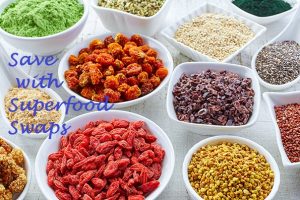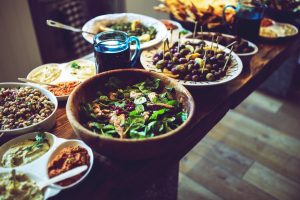Eating with the Seasons

Seasonal eating can actually mean MORE variety.
Think about it: We tend to get stuck in our food ruts, eating the same foods year-round. When you’re eating from a seasonal list of vegetables and fruits, you’ll be eating new things every season. This also makes things like strawberries really enjoyable when you know you’ll only find sun-ripened strawberries in the summer months. You will be able to enjoy them to their fullest potential!
The chart below is an approximate times for Vegetables seasonally. What is available in the northeast during spring will be different from those places that are more southern. Also, it certainly does not include every vegetable that could be available at any time! Fortunately, the variety of edible plants is immense.
| Spring | Summer | Fall | Winter |
| Artichokes Asparagus Beans, Fava Beans, Green Broccoli Cactus Chives Endive, Belgian Fennel Greens, Collard Greens, Mustard Greens, Spinach Greens, Swiss Chard Lettuce, Butter Lettuce, Red Leaf Lettuce, Spring Baby Mushrooms, Morel Onions Pea Pods Peas Peas, Snow Radicchio Rhubarb Sorrel Watercress |
Beans, Chinese Long Beans, Green Beans, Lima Beets Corn Cucumbers Edamame Eggplant Endive Garlic Lettuce, Butter Okra Peas Peas, Sugar Snap Peppers, Bell Peppers, Jalapeno Potatoes, Yukon Gold Radishes Shallots Squash, Crookneck Squash, Summer Squash, Zucchini TomatilloTomato |
Beans, Chinese Long Broccoli Brussels Sprouts CauliflowerCorn Daikon Radish Endive Endive, Belgian Garlic Ginger Jerusalem Artichoke Kohlrabi Lettuce, Butter Mushrooms Peppers, Jalapeno Pumpkin Radicchio Squash, Acorn Squash, Buttercup Squash, Butternut Squash, Delicata Squash, Sweet Dumpling Sweet Potatoes Swiss Chard Turnips |
Brussels Sprouts Chestnuts Collard Greens Endive, Belgian Kale Leeks Squash, Buttercup Squash, Delicata Squash, Sweet Dumpling Sweet Potatoes Turnips |
Traditionally, as both hunter-gatherers and as farmers, people would hunt or slaughter in the fall months when fresh, seasonal foods were in decline. Animal protein to consume during the colder winter months was practical when it could be kept easier and when fresh produce was scarcer. I have found many who eat seasonally, naturally eat more animal products in the colder months than the summer months when fresh fruits and vegetables are in abundance.
I was fortunate enough to experience the farming cycle as I grew up. There were many memorable summer meals that were created from whatever the garden yielded that day or week. A table laden with cucumber slices, okra and tomatoes smothered under onions, fresh beans and corn on the cob was a common summer supper. If one of the fresh berries were already out of season, there would at least be slices of cold watermelon for dessert. A simple, seasonal meal that satisfied the palate and senses.
Simply put, eating according to Nature (seasonally available) we will find our bodies cycling in this way: Warm foods, heavier foods and root foods in the winter when our bodies need more warmth, as well as citruses when available for the vitamin C to keep us healthy, followed by salads and an increase in fruits and veggies in the spring, almost completely plant-based foods in the summer with a slow transition back into the colder months.
Are you curious about finding the most seasonal food for your area? You may want to visit the website for the seasonal food guide or download their new app (https://www.seasonalfoodguide.org/download-app ) for your smartphone. Check your state out on the website here: https://www.seasonalfoodguide.org/
What are some reasons you enjoy eating with the seasons? Please share with us!
BACKRustic Slow Cooker Chicken
Facebook
Pinterest
Instagram
Kingdom Health VIP
Information on this website is provided for information and educational purposes only and is not intended to diagnose or treat any health problem, condition, or disease.
Copyright© 2018 Kingdom Health Coach. All Rights Reserved.
Design By: MIM Agency | MarketingIsMe.com


